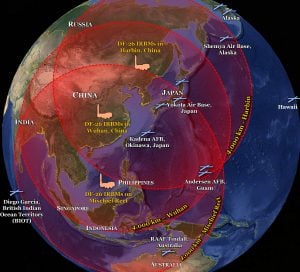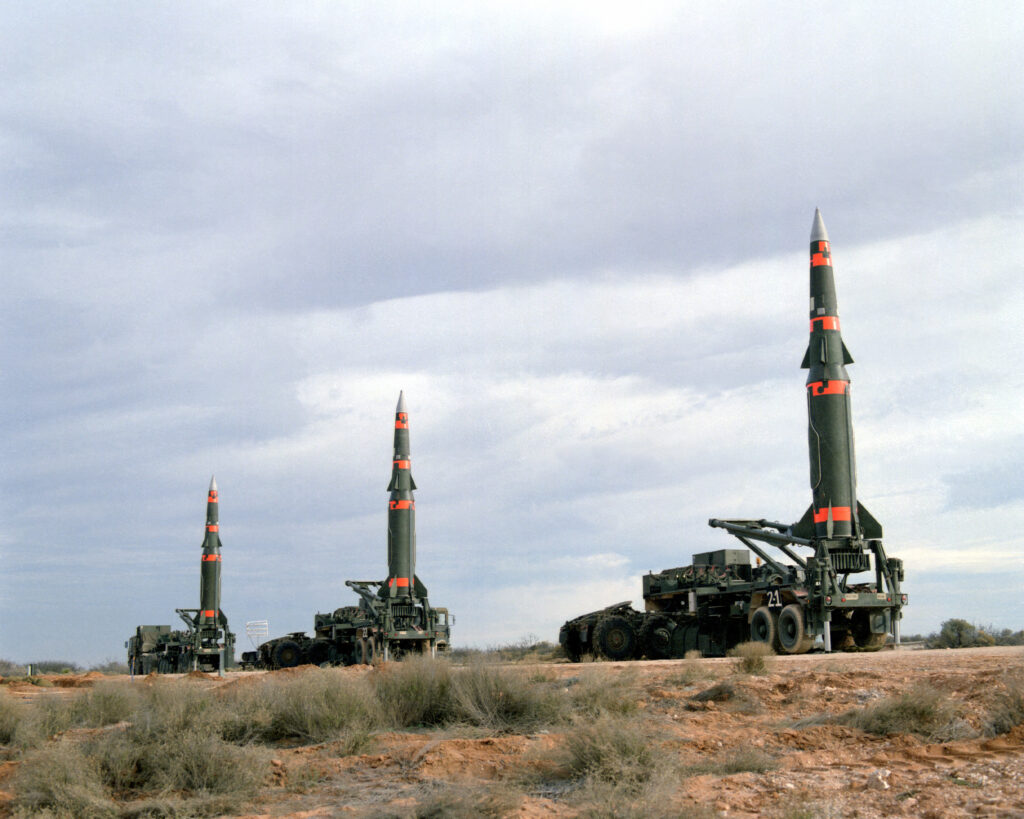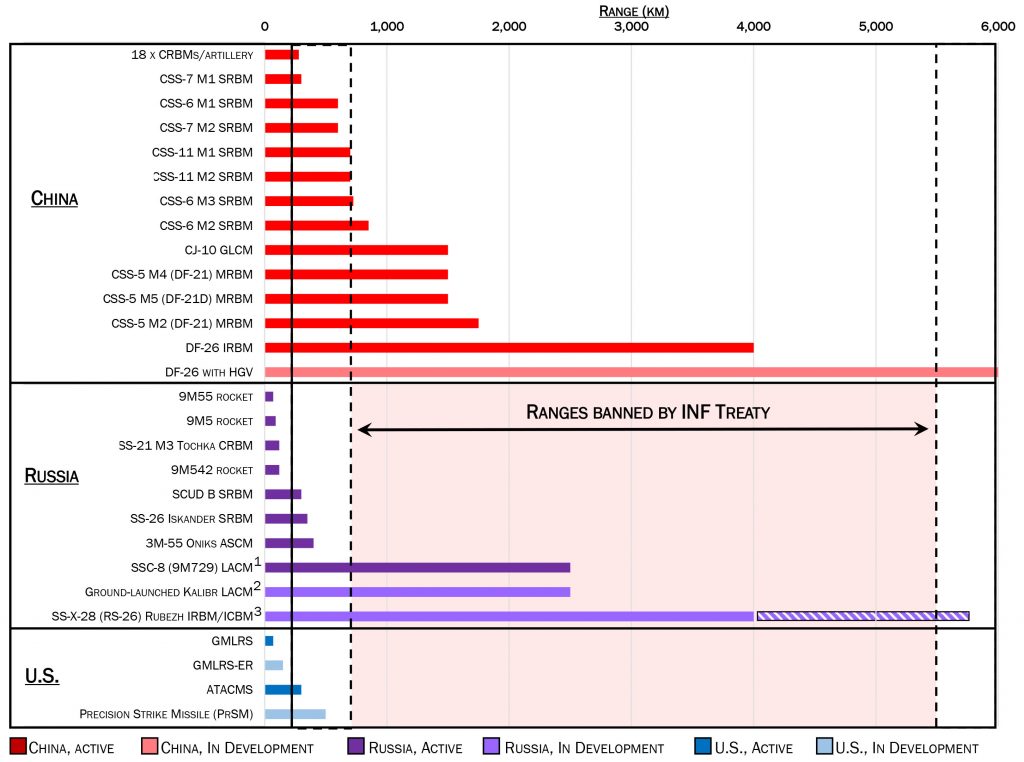Beyond INF: An Affordable Arsenal Of Long-Range Missiles?
Posted on
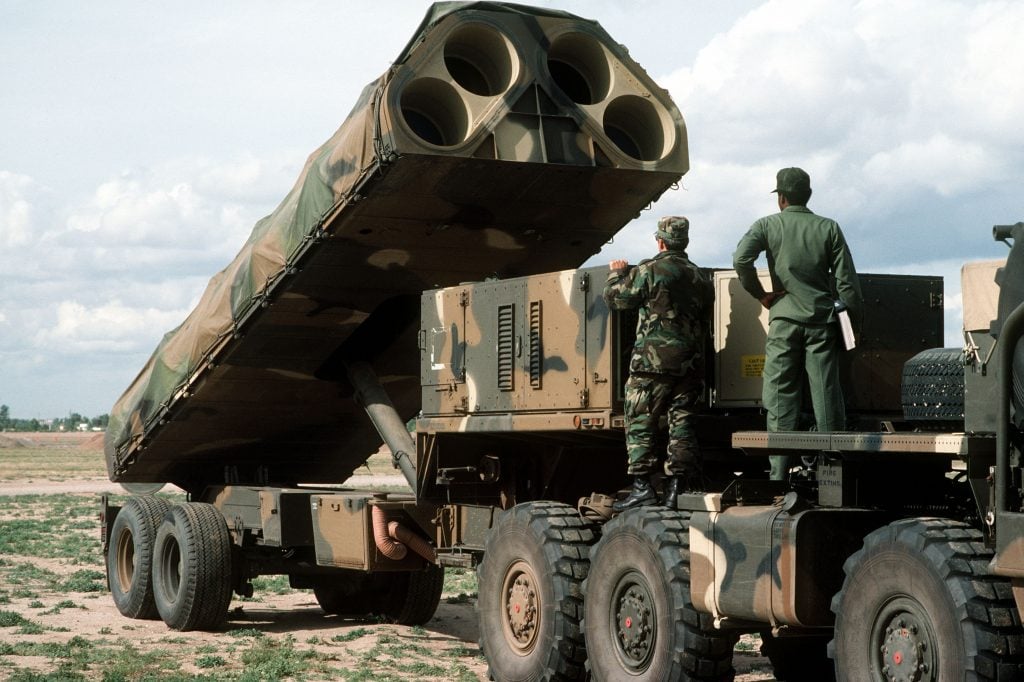
The Air Force’s BGM-109G Ground-Launched Cruise Missile (GLCM) was a Navy BGM-109A Tomahawk modified to fire from a Transporter-Erector-Launcher (TEL) truck. Recreating it would cost about $100 million, CSBA estimates.
WASHINGTON: With the landmark INF Treaty likely to expire in August, the US will be free to develop new long-range, land-based missiles to counter China’s — and by Pentagon standards, it could do so pretty cheaply, according to a new study from a highly regarded thinktank.
Converting the Navy’s Tomahawk cruise missile to launch from land would cost about $100 million, according to the Center for Strategic & Budgetary Assessments. After development, CSBA continued, each individual land-based Tomahawk missile would cost about $1.4 million for a variant that could only hit stationary targets like airbases or $2.5 million for one capable of tracking moving targets such as ships.
Weapons with longer ranges and more advanced stealth features to avoid being shot down would cost significantly more, of course. But even the most expensive option CSBA studied in its latest report — a hypersonic boost-glide weapon capable of hitting moving targets 4,000 miles away — would cost only $1.3 billion to develop and then $23 million per missile.

Click Graphic to Expand.
Notional ground-based missiles derived from existing systems: Precision Strike Missile Extended Range (PrSM-ER); Long Range Anti-Ship Missile (LRASM); Joint Air-to-Surface Standoff Missile Extended Range (JASSM-ER); and Tomahawk.
Notional missiles requiring all-new development programs: Small Medium-Range Ballistic Missile (Small MRBM); Large Medium-Range Ballistic Missile (Large MRBM); Intermediate Range Ballistic Missile (IRBM); Hypersonic weapons.
SOURCE: Center for Strategic & Budgetary Assessments (CSBA); some range figures courtesy Ian Williams, Deputy Director, Missile Defense Project, CSIS .
It turns out that land-based missile batteries are a lot cheaper than missile-carrying bombers and warships — which, of course, is precisely why China has built such a massive arsenal of them. In fact, offensive surface-to-surface missiles are much much cheaper than the missile defense interceptors required to shoot them down, because it’s a lot easier to build a weapon that can hit an airfield or even a warship moving 30 knots than it is to build one that can hit a missile moving hundreds of miles per hour.
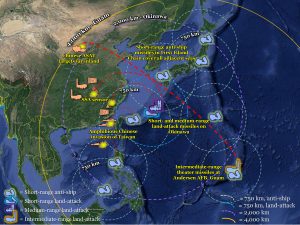
A notional network of land-based long-range missile batteries in the “First Island Chain” to contain China. (CSBA graphic; click to expand)
CSBA estimates it would take two American THAAD interceptors, at $9.4 million apiece, to assure the shoot-down of a single Chinese DF-16, at $6 million a shot. (And that’s just the cost of the interceptors — not the system that helps make them effective.) At ratios like those, guess who runs out of ammo first? But by building land-based offensive missiles of its own, CSBA has long argued, the US can turn the tables on China and Russia and pursue a “cost imposition” strategy of its own.
Now, land-based weapons are also much less mobile than bombers and warships, which is why the US, with its far-flung interests, has preferred air- and seapower. But with China and Russia investing heavily in anti-aircraft and anti-ship firepower to blunt America’s edge (a strategy known as Anti-Access/Area Denial), ground-launched missiles are starting to look like an attractive back-up option. So the US Army is reentering the long-range missile business — what it calls strategic fires — for the first time since the INF Treaty banned such weapons in 1987.
(Quick background: INF stands for Intermediate-range Nuclear Forces, but since it’s impossible to tell nuclear and conventional warheads apart from a distance, the pact banned all ground-launched ballistic and cruise missiles with ranges between 500 and 5,500 km, about 310 to 3,418 miles. Air- and sea-launched systems are exempt. The US and USSR signed the treaty in 1987 and the Obama Administration accused Russia of developing banned weapons, leading to the Trump Administration’s withdrawal this year. China has never shown interest in any arms control treaty.).
Now, estimating the cost of future weapons is notoriously tricky. CSBA lead author Jacob Cohn, who kindly walked me through their analysis and corrected (hopefully all of) my mistakes, are the first to put some caveats on their figures. All their estimates for both range and cost are approximations, they emphasized, are not exact. The more novel the weapon, the less precise the estimate.
So we can be pretty confident of CSBA’s figures for converting the sea-launched Tomahawk — in both in its longstanding land-attack variant and its new anti-ship mode — to fire from a truck-based launcher, which the US actually already did, back in the 1980s with the Ground-Launched Cruise Missile (GLCM). CSBA is likewise on firm ground with the cost of converting the existing JASSM/LRASM family of missiles, which are significantly stealthier than Tomahawk and thus harder to shoot down, from air- and sea-launch to ground launch. That said, the actual range of the anti-ship LRASM is a matter of debate, and I used a figure from a different source than CSBA.
By contrast, the thinktank had to extrapolate from historical data to model an extended-range version of the Precision Strike Missile (PRSM), since the Army is currently developing a baseline model with an INF-compliant range of 499 km. CSBA had to extrapolate even more for new technologies in the early stages of development, notably, the hypersonic options. Likewise, there’s a lot of extrapolation needed for weapons which would use proven technologies but which the US isn’t currently working on, notably the medium-range (MRBMs) and intermediate-range ballistic missiles (IRBMs), types the US hasn’t built since the Pershing II of the 1980s.
Nor is it just the cost of the weapons themselves. In many cases, where future weapons were too big to fit on the Army’s existing HIMARS and MLRS launchers, CSBA went so far as to factor in the cost of converting available trucks into mobile missile platforms. Other essential adjuncts were entirely beyond the study, although the US is investing in capabilities like long-range targeting already.
All that said, CSBA’s estimates all derive from three well-founded principles:
- Converting an existing missile to a new launch platform — in this study, Tomahawk and JASSM/LRASM — is cheaper than developing a new one.
- Building a shorter-range missile is cheaper than building a longer-range one, which requires a large booster.
- Building a missile that can hit static targets on land, like supply depots and airbases, is cheaper than building one that can hit moving targets, like tanks or ships, which requires a sophisticated seeker in the warhead.
On the upside, once you’ve developed a missile smart enough to hit moving targets, it can easily hit static ones as well. (Or you can produce a cheaper, dumbed-down version that can strike fixed targets, saving money at the price of flexibility). That means developing any of the anti-ship missiles in the chart would also give you the land-attack version for no additional development cost.
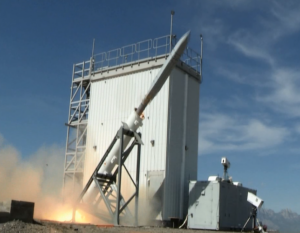
The first firing of a Long-Range Anti-Ship Missile (LRASM) from the kind of vertical launcher used on Navy ships.
So, while simply adding up the estimated cost of developing every potential weapon that CSBA studied would give you a total of $12.1 billion, a lot of that is double-counting. If you add up only the anti-ship versions — which, again, would give you the land-attack capability as well — you get a total of just $6.5 billion, spread out over at least five years.
Besides, in practice, you wouldn’t develop every weapon CSBA explored, since some are similar enough to each other to be redundant. In particular, CSBA’s small Medium Range Ballistic Missile (basically a baby Pershing) and the large MRBM (a super Pershing) are two different approaches to almost the same mission. So while the usual program overruns might well push the costs of individual programs above CSBA’s estimates, the total cost for an array of options should stay in the same range.
For a Pentagon that’s spending about $12 billion to develop the new B-21 stealth bomber, $7 to $12 billion seems a reasonable price to develop an array of new land-based missiles as a backup plan.
Subscribe to our newsletter
Promotions, new products and sales. Directly to your inbox.



